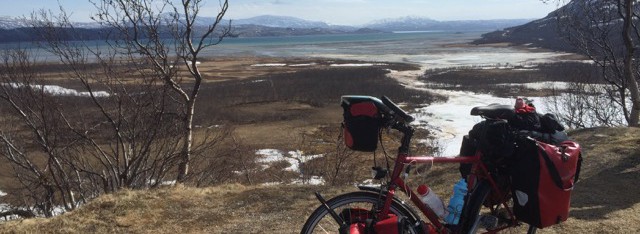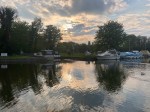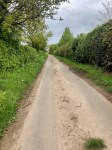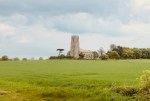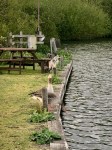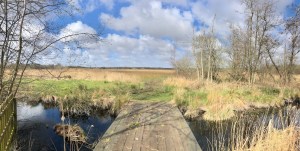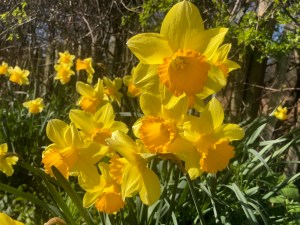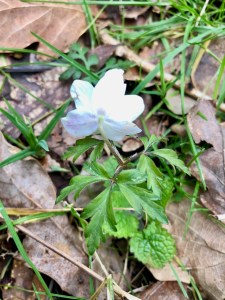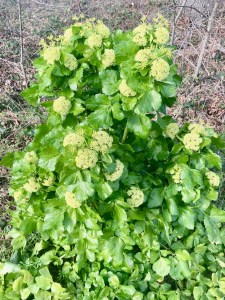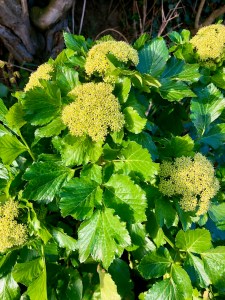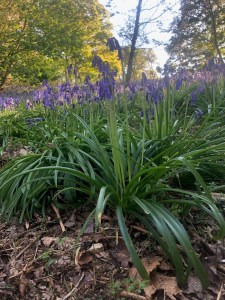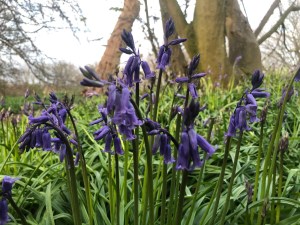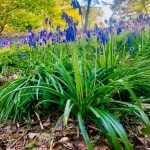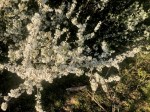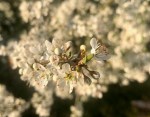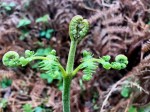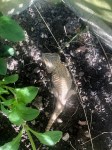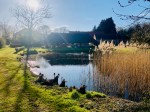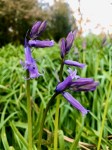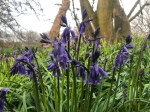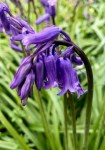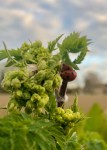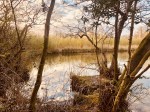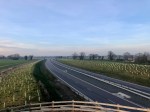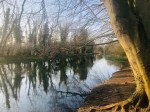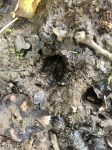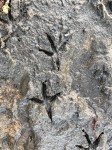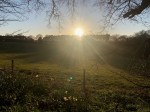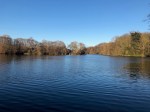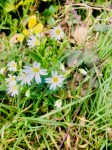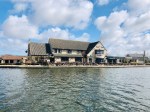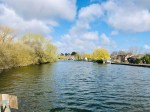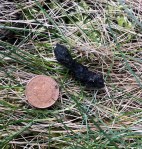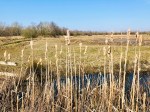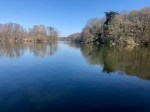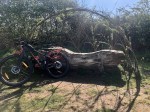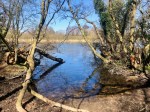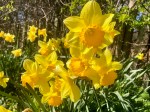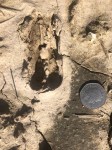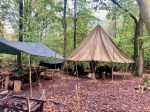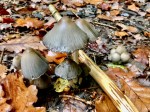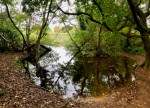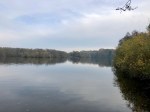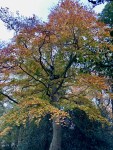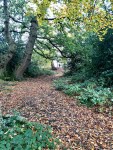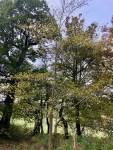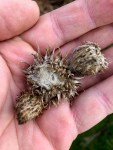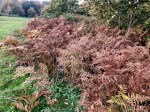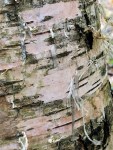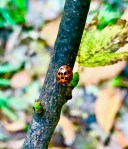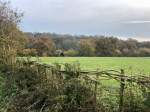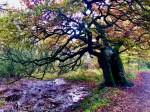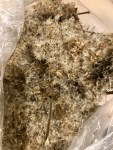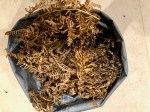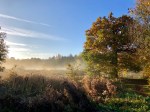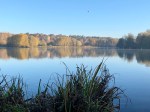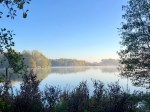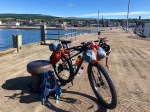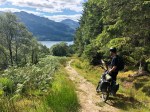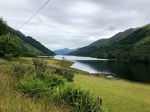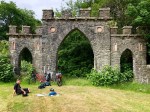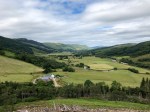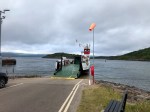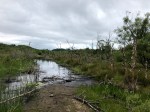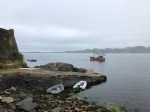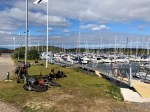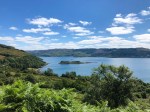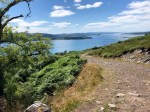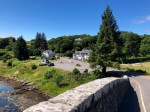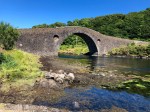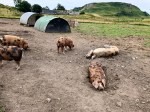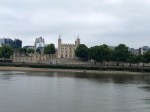Time for part 2 of my wild plants and flowers blog, where I attempt to identify the various species I find roundabout where I live in Norfolk. I think there must be hundreds of different plant species out there at the moment, I keep seeing new ones every time I go out for a walk or cycle ride, so I’ll only cover a fraction of what’s on my doorstep.
Is this week 6 in lockdown? I can’t remember how long I’ve been working from home now but it’s starting to get a little dull with the lack of office banter. At least I’m mostly still getting out for my daily cycle or walk, although I did miss a couple of days last week due to it being a bit wet and just not having the motivation. I’ve said it before but I do feel very fortunate to have such wonderful countryside and scenery on my doorstep, even if Norfolk does lack any serious hills or big forests; the Broads make up for it!
- Ranworth Broad in the sunshine
- Ranworth Broad looking toward church as clouds gather
- Church near Horning – closed as they all mostly are
I really like what some enthusiasts are doing at the moment; using chalk to label the names of plants they’re finding in villages, towns and cities across Europe. Brilliantly educational for people out on their daily exercise, especially children. I suspect there was a time when kids were just taught the names of wild plants, and what they can be used for, as a matter of course, but that knowledge has faded. Using chalk to label the plants, which will wash off harmlessly in the next shower, is a great idea; and yes strictly speaking it might be illegal, but so are the air pollution levels in many towns, or driving whilst using a mobile phone, or fly tipping, but people get away with that all the time. I think we can let a bit of educational and colourful graffiti that is bringing a bit of joy slip.
On Sunday I rode my bike up to the coast at Happisburgh because I wanted to see the sea. It was actually the sound of the waves hitting the shore that I wanted to hear, rather than seeing it. Pedalling the country lanes was lovely, the verges covered in plants and flowers, insects buzzing and kestrels hovering. I also saw a stoat hunting along a hedgerow with its distinctive black tipped tail, but too fast to photo.
- Church near Tunstead – loads of interesting plants in the graveyard
- Pedalling the country lanes to Happisburgh
- Honing Church – never seen this one before (as opposed to Horning)
It was a 62km round trip on my bike, taking about two and a half hours. I want to start building up my cycling distances again in case I decide to do another long cycle tour once we’re out of lockdown. I’d really quite like to cycle round the coast of Britain again, which I first did in 2013. It was a wonderful trip, and I learnt so much about my own country; you can read about it on my Bike around Britain blog.
- Happisburgh lighthouse – iconic landmark for many
- Blackbird collecting worms for young
- Spot the Grey Heron
Before I get onto this week’s plants, here’s a short bit of film I took up at Happisburgh, in case you’d like to hear the sea too (and the wind).
On to plants.
The photo of this first one is from several week’s ago, and also contains a few other hedgerow species. Focussing on the plant in the middle with the arrow shaped leaves; Lords and Ladies, also known as Cuckoo Pint (Arum maculata). Some of the country lanes round me have banks crowded with it.
It’s got lots of other names, some of them quite evocative such as Jack in the pulpit, Devils and angels, Friar’s cowl and Adder’s root; these names might be down to the different plant parts looking like male and female genitalia. Later in the year it produces a fruiting stalk that grows up from the centre, with distinctive orange-red berries. You can see this around July/August and into Autumn. The flower, a cobra like hood, is nestled in amongst the leaves and is different again. It smells like rotting meat which attracts flies, which in turn pollinate the flower, pretty cool. I’ll try to get some photos of the different parts as they appear. Lords and ladies is poisonous as it contains oxalate acid crystals. These crystals are spiky and can irritate the tissue of your mouth and digestive track if swallowed. If you’re allergic to such things it could cause your throat to close up. I have tried a little bit and it’s definitely got a sharp and heated aftertaste, that builds with time; apparently the older you are the longer it takes to notice.
Lords and ladies is native to the UK, in England, Wales but not so much Scotland. It’s a perennial, and prefers the shaded areas. The plant contains large amounts of starch, so was used in washing for collars etc. I’m told that when the ‘gentry’ used to select their washerwomen they’d look for those with the sore red hands, as they’d be the hard workers; their hands were afflicted by the oxalate acid in the Lords and ladies.
I’ve included a couple of pics of this next one, Ground-ivy (Glechoma hederacea). I like this first picture because of the interesting ladybird, and the pretty small purple flowers. Ground-ivy is another one of these plants that has multiple names, including Alehoof, Gill-over-the-ground, Catsfoot and Creeping charlie. I prefer Alehoof as before the introduction of hops Saxons used it to brew beer. It’s another native perennial and common throughout most of the UK, flowering from March to May.
I found this one in a graveyard, but it pops up all over the place and is considered an invasive weed by many. It’s actually a member of mint family, which you can tell by its square stem. I also don’t think anything that can be used to brew beer should count as invasive or a nuisance, although it can spread rapidly by runners or seed. I believe the leaves can be eaten in salads, but the plant might be toxic to livestock. Apparently it has lots of traditional herbal medicine uses, but I really don’t know if any of them are effective; treating eye inflammation, tinnitus, lung herb (bronchitis), as an astringent or a diuretic. I have a feeling a lot of uses were just made up, the old placebo effect.
I really want to cover wild garlic on this blog, also known as Ramsoms, however I’m learning there are probably several varieties.
This photo I think is of Three-cornered garlic (Allium triquetrum), which is the same family as Ramsoms, and no doubt still counts; it certainly smells strongly of onions. I think this particular variety counts as an invasive species as it can smother out native species, meaning it’s illegal to plant it out in wild. If it is this then I’m seeing a lot of it on the banks of country lanes round me. For reference it flowers April to June and likes shady spots.
The variety I wanted a photo of has broader leaves, and I found loads of it when I was down South last. This is what I regard as Ramsoms (Allium ursinum), and the two photos that follow are courtesy of the Wild Food UK website – https://www.wildfooduk.com/edible-wild-plants/wild-garlic/
This species is definitely native, and the flowers are quite different. It can be found over most of England and Wales, and Southern Scotland, in damp and shaded areas, especially woodland. It flowers from April to June. I love it for making pesto, and the whole plant is edible, however I would avoid digging up the bulbs so it can regrow. Garlic has a number of health benefits including treating high blood pressure and cholesterol. I’ve no doubt it has loads of other benefits too, including the obvious of keeping vampires away. I reckon you can use it pretty much anywhere you’d usually use garlic, so I think I’ll try adding some to guacamole next time I make it. Don’t get it confused with Lily of the Valley which looks similar but is poisonous; doesn’t smell anywhere near the same though.
Following the trauma of trying to work out which wild garlic is which, here’s something a little easier, and which again there is loads of around me at the moment.
White Deadnettle (Lamium album) is very common alongside footpaths, hedge-banks and roadsides, but apparently gets rarer as you travel north. It’s a perennial and flowers from March to December. Like Red Deadnettle covered last time it won’t sting you. I’m told it can be eaten like spinach but I’ve not tried it. Herbal medicine wise it has been used to treat catarrh, and the flower used for treating sore throats and bronchitis. Apparently it might also be effective as a sedative.
Whilst it might have uses for humans, I think it’s of more use to the different varieties of insect I see feeding off it. Not mowing the roadside verges is definitely helping our insect friends thrive at the moment.
Here’s another Deadnettle, which I’d somehow failed to consciously notice before now, despite it being common in England and Wales. It’s a perennial flowering from May to June, although I saw it out in April this year; maybe another symptom of climate change and average temperatures going up. This one is called Yellow Archangel (Lamium galeobdolan), and I love the bright yellow hooded flowers. This example appeared to have slightly variegated leaves, which I don’t know if is usual or not; from the pictures I’ve seen I don’t think so. I believe you can eat the young leaves and shoots, and that the leaves taste slightly spicy. I might have to try making a tea or soup from it. All these plants seem to have multiple potential uses, and this one is again a diuretic and astringent, amongst other things.
Whist I’m doing ‘nettles’ I ought to cover the well known and often disliked Stinging Nettle (Urtica diocea), which I’ve no doubt most people can recognise. This is common pretty much everywhere, and most definitely counts as a native perennial. It grows in woods, wasteland, gardens, field edges and footpaths, and is much loved by several species of butterflies, for their caterpillars. It’s definitely worth keeping a small patch in your garden, and not just for the insects. The small hollow hairs on the nettle leaves and stems are what sting, containing formic acid and histamine.
Stinging Nettles are amazing plants as they have so many uses, and as they grow pretty much everywhere, and quickly, you can easily get hold of lots of them. They contain Vitamin B, as well as A, C and K, the aforementioned formic aid, minerals such calcium, iron, magnesium, potassium and sodium. They also contain between 19% and 21% protein, so they’re truly a superfood. I have made nettle soup from them, and thrown them in stews like spinach, you just have to remember to remove the hairs first by crushing and rolling them. That reminds me, I think you can use the pith from the inside of the stem to treat nettle stings, which could be handy, although you’ll probably sting yourself getting to the pith. Pretty much a superfood I reckon, and will be useful if the supermarket shelves go empty. It flowers from May to September.
One more use for the amazing nettle; you can make cordage out of it. Collect a load of stems, perhaps keeping the leaves for food, and split them down into long fibres by crushing the nodes, squishing the stem and separating, removing the pith. To make nettle string you dry the fibres for at least 20 minutes, then twist two lengths together in a twist and kink motion, which would be much easier to demonstrate than describe with words. Over the course of an evening round a campfire you can make quite long lengths of cordage that can be used for all sorts of things.
I think that’s your lot for today as I’ve noticed my word count has crept over 2000 and I don’t want people to fall asleep. I also want to save Umbellifers for next time, when I’ll perhaps cover the likes of Hemlock, and Hemlock Water Dropwort, both of which can kill you reasonably easily, although one is more painful than the other. And Hemlock is absolutely everywhere! That’s one of the reasons I don’t really like eating anything from that family, as I don’t want to get Cow Parsley mixed up with something that’s going to send me over the River Styx in a speed boat. I’ll see if I can find some Cow Parsley and Hogweed too though.
As before please don’t take any notes I’ve made concerning medicinal uses as gospel, as there are lots of different opinions out there, and different people are allergic to different things. Please do your own research.
I’ll leave you with a picture of a cat in a box, because cats love boxes for some reason, especially this one.
Until next time, stay frosty.
